The Shirt
The men’s white dress shirt is believed to be dated to the Victorian Era. The collared shirt was an indication of wealth and class. The white color of the shirt answered to the ideals of masculinity society had defined, and only a person of wealth could have had the means to purchase a white shirt and keep the color pure (or alternatively, purchase more than one shirt to wear).
The distinction of class in society made by the definition of the collared shirt coined the terms “white collar” and “blue collar”. As men of high class would wear the white shirt that should have kept clean, men of lower classes were dressed in shirts of different colors. This was characterization of how a low class worker can dirty his clothes, while a high class man of means (which was the usually the employee) should have kept his “hands (white shirt) clean”.
The stiffness of the collar was another characterization of wealth; being used as a “shield”, the well-adjusted collar would be stiff and prevent easy movement to the wealthy. in 1872, the detachable collar was invented after a wife decided to cut the collar and clean it by itself. The detachable collar would be adjoined to the shirt only by fasting it with strings on the neck. The detachable collar was popular in the working class, since it provided the ability of taking it off and having even more ease of movement.
By the end of the 19th century, the cost of the white shirt has diminished, and thus lower class workers were able to purchase a white collared shirt to wear for special occasions. With this development, the distinction between the high- class shirt and the lower class shirt was made only by the fit of the shirt and not the color.
Many innovations were made to the white collared shirt over the years. After World War 1, a new style of dress shirt was introduced, with softer lines and semi- stiff collar. In the 1950’s, Brooks Brothers offered polyester blend shirts that lowered the cost of the shirt. Cotton, then and now, is considered to be the proper martial to make a high quality shirt. Over the years, the white collared shirt had many iterations of the design- from different width and length of the collar, to colors and frills and frontal ruffles; although, the stiff white collared shirt would be the proper attire for work.
Today, with the collared shirt being more affordable and the difference of class being less substantial, stores have much more to offer to a client- from different width and length of collar, cuffs and body of shirt, to colors and materials, the white collared shirt can be attained by everybody.
The Basic Muslin Shirt:
The Conceptual Dress Shirt:
The Conceptual Dress Shirt- Reflection
For this project we were asked to design and create a conceptual dress shirt. After taking inspiration from designers such as Shingo Sato and brands such as Comme des Garçons, we designed a shirt that had to include sleeves, plackets, cuffs and a collar, yet there placement could have been anywhere. We had two weeks for this assignment.
For my design, I wanted to change the placement of the placket and to play with the size and pattern of the sleeves. I decided to place the placket all around the dress shirt, thus creating two separate pieces that together create one whole shirt. The sleeves were oversized and played on geometrical references.
Initially, I was very curious and inspired by the history of the detachable collar and wanted to incorporate the into the design. Yet, for lack of time I decoded not to.
After the instructor suggested using a curtain for the project, I went an bought a sheer white Polyester curtain, and used it as fabric. The majority of the shirt is created with only the fabric, but the plackets, cuffs and collar, were lined with interfacing. With the sheerness of the fabric being very prominent in the design, I wanted to create a more “seam conscious” design, and many of the seams of the shirt are flipped french seams. The sheerness of the shirt, along with the seams and overall design, create an illusion of air, body, fabric, and what is between them.
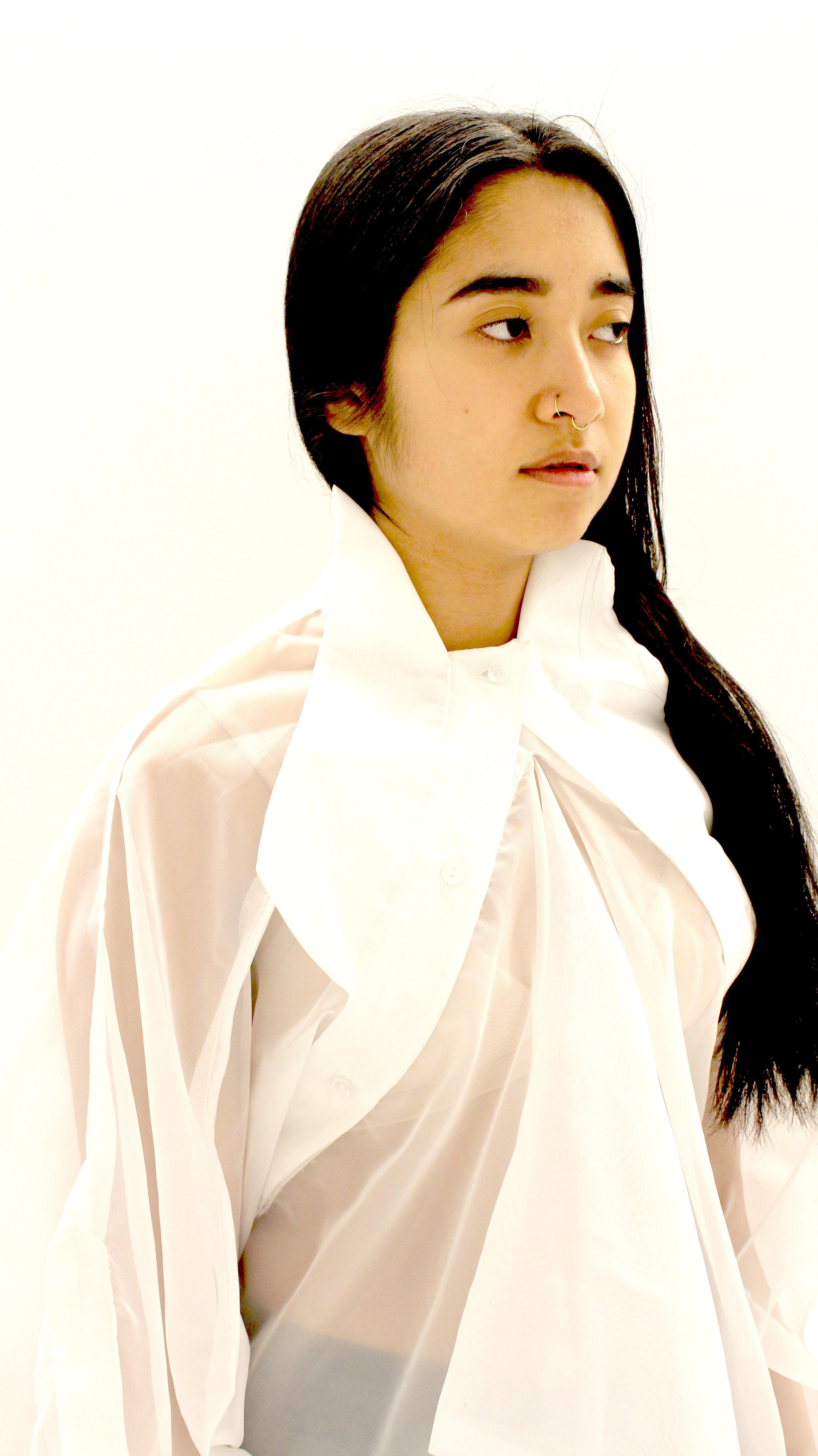
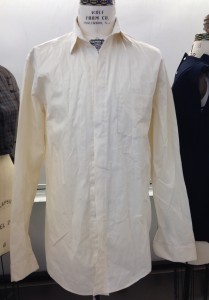
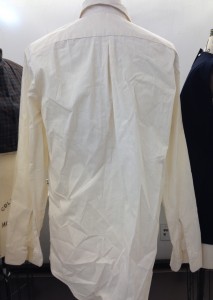
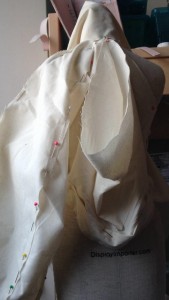
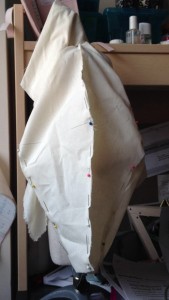
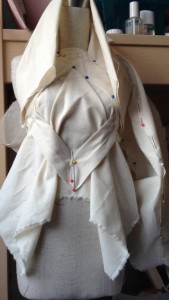
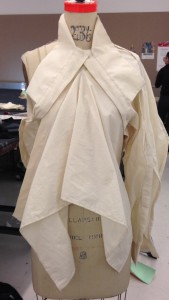
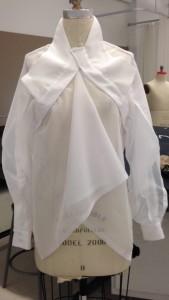
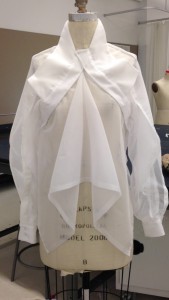
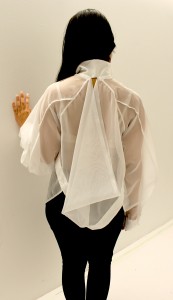

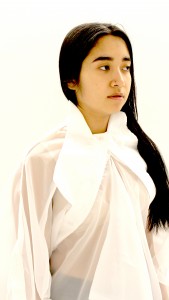
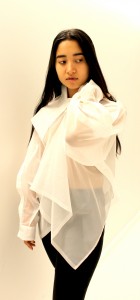
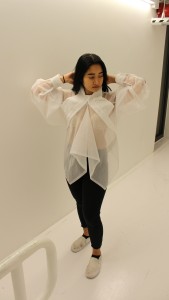
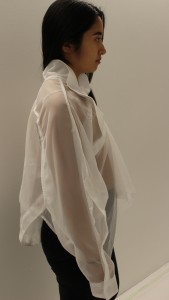
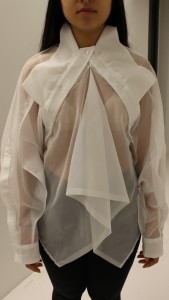
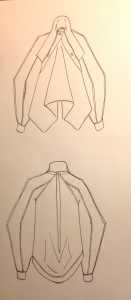
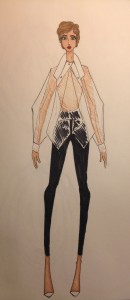
Excellent work
Your portfolio shows your thought process from start to finish as a designer, beautifully done